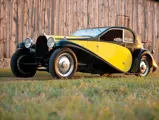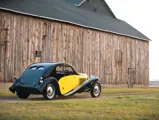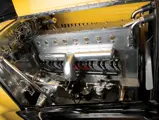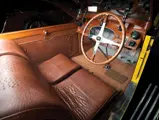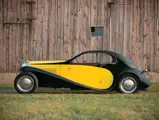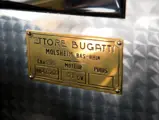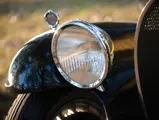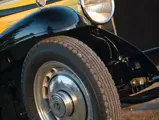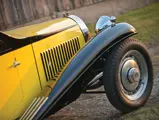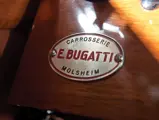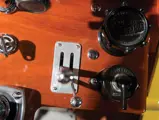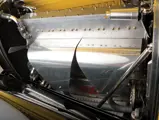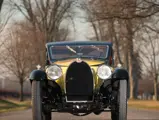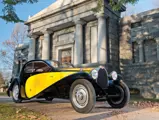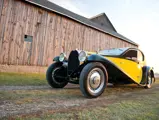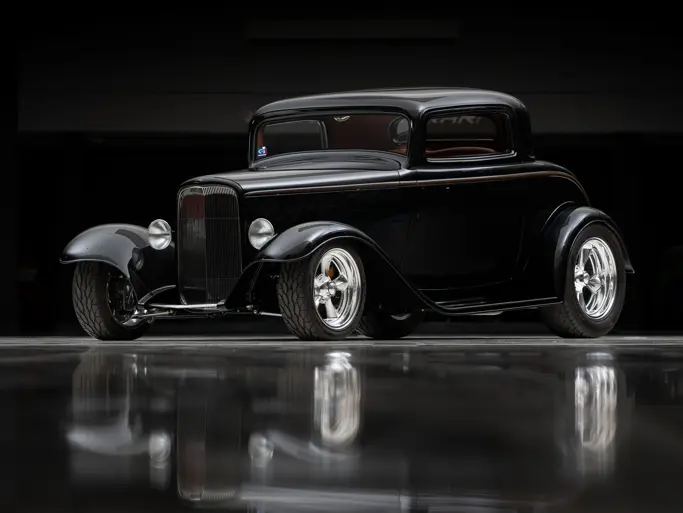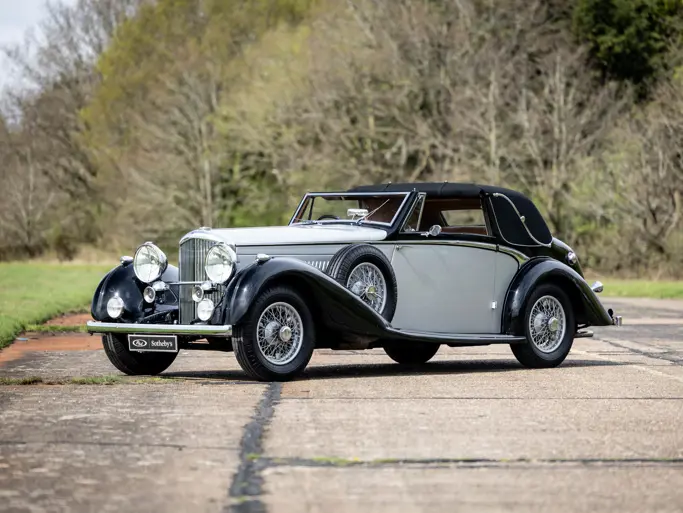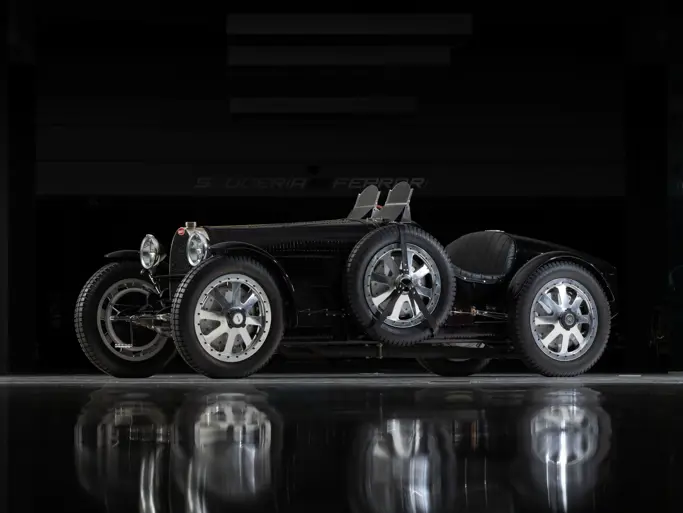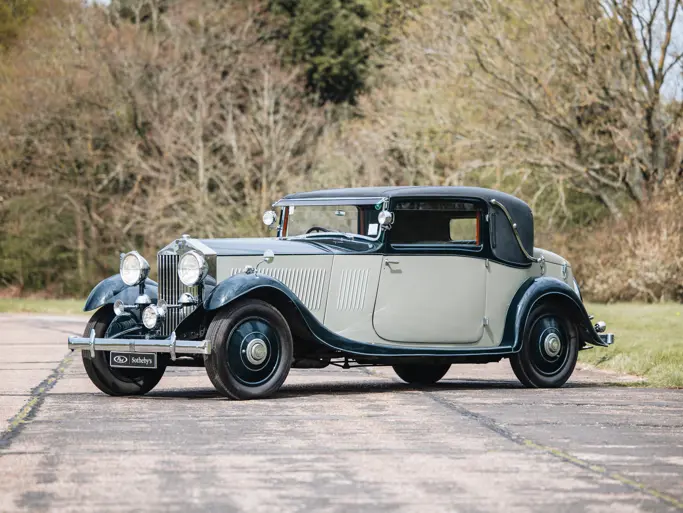Villa Erba 2013
1930 Bugatti Type 46 Coupé Superprofilée in the style of Jean Bugatti
{{lr.item.text}}
€672,000 EUR | Sold
 | Cernobbio, Italy
| Cernobbio, Italy
{{internetCurrentBid}}
{{internetTimeLeft}}

- “La Petite Royale”
- Jean Bugatti’s most exotic coachwork design
- Beautifully detailed interior in ostrich leather and walnut
140 hp, 5,359 cc SOHC inline eight-cylinder engine with three valves per cylinder, three-speed manual transmission, front semi-elliptic leaf spring suspension, rear inverted quarter-elliptic leaf spring suspension, and four-wheel cable-operated drum brakes. Wheelbase: 3,505 mm (138 in.)
Whatever its origins, Ettore Bugatti intended the Type 41 to be the ultimate, be-all and end-all statement in motoring. Accordingly, the vast “La Royale” was offered only to noteworthy heads of state, and at a price tag of $35,000, even they balked. For the mere wealthy mortals with a lust for life, Bugatti offered the Type 46, which offered Type 41-inspired lines, beautiful engineering, and typically idiosyncratic Bugatti construction. It is known affectionately to enthusiasts as “La Petite Royale”, or the Little Royale.
The Type 46 employed a steel ladder-type chassis stretching 138 inches (3,505 millimetres) from axle to axle, and it is powered by an equally impressive long-stroke 5.4-litre inline eight-cylinder engine that features a single overhead camshaft, three valves per cylinder, and two spark plugs per cylinder, delivering a stout 140 brake horsepower. The engine block casting was extended down to the main-bearing supports, providing rigid structure, exceptionally smooth operation, and amazing durability. The three-speed manual gearbox was mounted within a rear transaxle unit. Four-wheel, self-adjusting, cable-operated brakes with 16-inch drums provided stopping power behind wire-spoke wheels, replaced on later cars by stylish, vane-type alloy wheels inspired by those fitted to the “Royale”.
The Type 46’s lasting influence on Bugatti was as forerunner of the later grand touring models and as among the most popular new cars that the factory ever built. Its combination of the company’s racing-bred engineering with true comfort resulted in some 350 being built and sold between late 1929 and 1933. Typical of Bugatti, whilst custom coachbuilders the world over used the Type 46 as basis for their best work, the most flamboyant and dramatic designs came right out of Molsheim, flowing from the creative pen and mind of Ettore Bugatti’s son, Jean.
Among these was the so-called Coupe Superprofile, which some argue is the finest of all of his designs. Extraordinarily long, flowing open wings seemed to pour from one end of the car to the other, rolling over the front wheels and kicking up at the rear of the car. The windshield was swept back at an extreme angle and seemed to fade away into the roofline, which swept around to the rear in a teardrop arch that falls between the wings, echoed by the “sweep panel” that divided two-tone colour schemes in bright, exotic colours. Not since Rubens had curves been so celebrated.
The Type 46 offered here is a spectacular representation of the long-lost Coupe Superprofile, constructed by award-winning coachbuilder Ken Haywood, of New South Wales, Australia, on an original, numbers-matching combination of chassis number 46208 and engine number 77. This car was originally delivered by Paris Bugatti dealer Dominique Lamberjack, of 68 Rue Bayen, on 1 February 1930, with four-door Conduite Interieure saloon bodywork. It was registered in Agen, capital of the Lot-et-Garrone department, with plate number 3630 JV1, in 1932, passing in 1935 to a gentleman named Grenier, and in 1937 to a Rodriguez. At some time it was returned to Paris, wearing plate number 6324 RL4. Later, the car was purchased by Baron John Raben-Levetzau, owner of the automobile museum at Castle Aalholm in Nysted, Denmark.
The restoration and coachbuilding effort that resulted in the car’s present appearance is photo-documented, and its excellence is confirmed by the astoundingly high levels of fit and finish found throughout. All trim is beautifully crafted and detailed. In particular, the interior is spectacularly appointed in brown ostrich leather with a flawlessly finished wooden dashboard and steering wheel rim, appearing as an inviting mobile drawing room filled with rich scents and warmly glowing under the dual instrument lights. Under the hood, with the engine turning on both sides of the firewall, the cylinder head and other components display not only the cleanliness and quality of presentation, but they also serve as a reminder of the legendary machine fit of the engine components.
Chassis 46208 was displayed and won honours at the 2011 Sydney Concours, and in recent care in North America, it was also shown, to the delight of all present, at the 2012 Concours d’Elegance of America at St. John’s in Plymouth, Michigan, one of the top concours events in the United States. The present owner has exercised the car and reports that it runs and drives exceptionally well. It continues to present as a Bugatti should, as an automotive Swiss watch filled with fascinating ornate details that entrance the eye as much as the performance stirs the heart.

